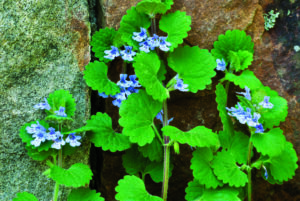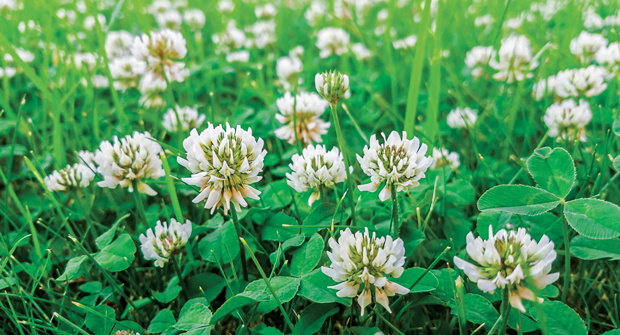As we jump into 2025, we can all use a little bit of good luck to avoid the pests that plagued us in 2024. However, one weed expected to spring up in lawns again this year is white clover, and sadly, likely not the four-leafed kind.
White clover (Trifolium repens), in addition to ground ivy (Glechoma hederacea) — another recurring pest found throughout most of the continental U.S. — are two aggressive weeds that love to hog open spaces in lawns and landscapes.

Jay Wyrick, turf and ornamental agronomist for FineTurf in North Carolina, says white clover is a low-growing perennial that spreads through above-ground stems — called stolons — that allow new plants to take root. It grows best in shady, moist areas, and it can be identified by its three oval leaflets that join together in a shamrock shape with a white flower to top it off.
And while ground ivy also spreads similarly through stolons and in damp areas, Wyrick says this perennial can be identified by its long stems, heart-shaped leaves and clumps of lavender flowers.
New year, same solutions
Wyrick says that while these weeds are extremely common, they’re still difficult to control. His strategy involves one or two repeat applications in the spring and fall to combat their ability to spread.

“With the stolons, they’re real aggressive,” Wyrick says. “They do take a couple of applications, typically, to kind of get the best control.”
Wyrick says there are several herbicides and solutions to remove white clover and ground ivy, and one mixture that he uses is triclopyr with 2,4-D. For warm-season grasses, however, Wyrick says other products like MSM and sulfosulfuron can work better (with sulfosulfuron targeting clover more specifically).
“The 2,4-D (and) triclopyr in cool-season (grasses) is absolutely our go-to in cooler weather like early spring and fall,” Wyrick says. “Just make sure we get all the right chemicals on the right grass.”
Like with many weeds, lush and healthy lawns are better suited to resist these pests, so proper turf maintenance is a great way to prevent and contain them. And, if all else fails, Wyrick says sometimes you might just need to pull them out.
A common mix-up
Just like putting the right chemical on the right grass, Wyrick says lawn care operators also need to put the right chemical on the right weed.
Misidentification arises when the plants are younger and the details that make each weed easier to differentiate haven’t fully formed yet. For example, he says white clover can often be mistaken for oxalis weeds while ground ivy is confused for purple deadnettle (Lamium purpureum) and henbit (Lamium amplexicaule).
Waiting for the white flower to bloom in clover is its best giveaway, and for ground ivy, Wyrick says the leaves are more rounded and scalloped with flowers that can be more blue compared to its common mix-ups.
“One of the good indicators on ground ivy is you can kind of get a handful of leaves and crush them up, and it gives this odor that’s almost like stale meat or roast beef,” Wyrick laughs. “It’s not really pleasant.”


